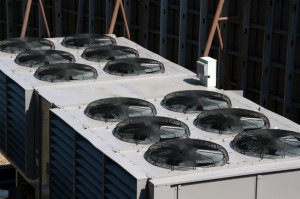How Deferred HVAC Maintenance Fails can be Catalyst for Proactive Plans
 The numbers are clear: Deferred maintenance of cooling towers may save money in the moment but comes with big costs over the long term. Worst-case scenario? Employees or members of the public contract serious, water-borne illnesses such as Legionnaires’ Disease. While knee-jerk repairs can put a band-aid on this problem companies need a better way to do business: Proactive maintenance plans that both address emergent issues and keep spending under control. Here’s how to get started.
The numbers are clear: Deferred maintenance of cooling towers may save money in the moment but comes with big costs over the long term. Worst-case scenario? Employees or members of the public contract serious, water-borne illnesses such as Legionnaires’ Disease. While knee-jerk repairs can put a band-aid on this problem companies need a better way to do business: Proactive maintenance plans that both address emergent issues and keep spending under control. Here’s how to get started.
Get Specced
Legionella outbreaks are a serious concern for any company using a large-volume cooling tower. Hospitals, shopping malls and large manufacturing plans are good examples — if their water supply becomes contaminated the results can be disastrous.
To address this issue, ASHRAE recently debuted a new set of specifications: Standard 188-2015, which describes an effective and efficient water management program. It requires the identification of a program team, detailed water flow diagrams, analysis of current systems, list of potential corrective actions and confirmation that these procedures are both followed and effective. Finally, all aspects of the program must be documented to ensure accuracy. Simple enough, right? So why aren’t more companies already taking a proactive stance?
Consider Culture
As noted by Machinery Lubrication, many companies are still stuck in a reactive rut: Use machinery until it breaks, then fix it just well enough to get production back on track. Breaking the habit is difficult, however, since many companies unconsciously reward failure. Think about it — if you’re paying employees overtime to fix broken machines, you’re creating a solid link between under-performing tools and lucrative work. New models can’t be implemented overnight but a good way to start the move toward proactive maintenance is by rewarding long-term performance: If employees are paid small bonuses to hit maintenance milestones and keep machines up and running the result is a renewed interest in proactive habits.
Change The Conversation
Companies need to take this a step further, however, if they want to see lasting change in cooling tower cleanliness. Plant Engineering argues that it’s possible to prevent or control every single failure that occurs in a facility, but this requires a change in the maintenance conversation. Rather than telling employees to “go check the cooling tower”, businesses need to lay out specific procedural and measurement criteria.
Pushback here often takes the form of “our guys know what they’re doing” — and they probably do — but if you don’t lay out specific task details you don’t know if everyone is taking the same steps or checking for the same warning signs. By designing a plan focused on the details which include descriptions of legionella precursors and indicators along with the mandated use of cooling tower-specific cleaning systems it’s possible to take the guesswork of out proactive maintenance and significantly lower the chance of contamination.
ASHRAE’s new standard 188-2015 provides a clear mandate for improved cooling tower maintenance. By creating a proactive plan to underpin this documentation, companies can free themselves of the break/fix deferred maintenance cycle.


Fujitsu Heat Pumps Auckland
Very good article guys, really highlights the importance of having a proactive maintenance plan in place.